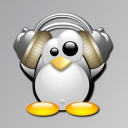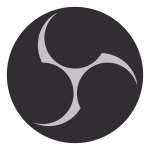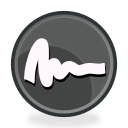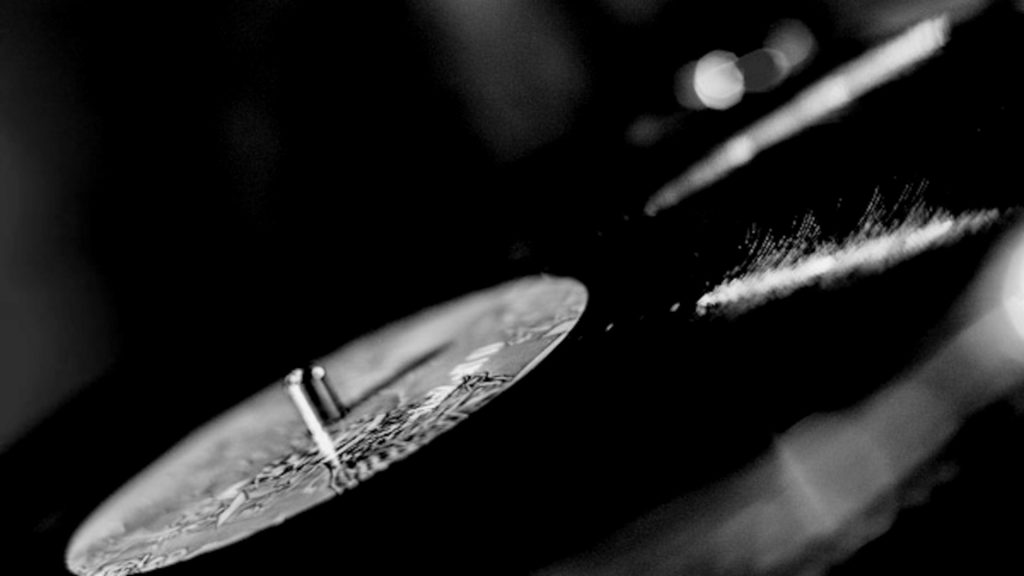I wanted to update you about a couple of my projects that I was able to spend time on, now that I took some time off of work. I need to distance myself from my day job every so often to prevent a burn-out and this time I am dangerously close.
I baked bread for the first time in years and it was well-received in the family. The result was a tasty sourdough bread using the wild yeast culture that I am keeping healthy for many years now, even if I had not used it for making bread for a long time. Although a while ago I did share some of the sourdough culture with a friend who is also into baking bread. Even a tiny bit of “starter” can jumpstart your career of baking 🙂 It’s a tedious task to raise a healthy culture of wild yeast and suitable bacteria that create good bread.
But I would like to focus more on liveslak, on my Digital Audio Workstation spin, and some new software for which I created packages.
![]() The liveslak project received some interesting new features.
The liveslak project received some interesting new features.
Most importantly, the hard disk installer of the Slackware Live Edition – called “setup2hd” – was expanded. In the past, it used to allow only the installation of the Live OS to your hard drive. But I received requests to also make it possible for setup2hd to install regular Slackware like the official installer does. It sounded like a good idea, and starting with liveslak release 1.3.7 the “setup2hd” program will let you choose from more package SOURCES than just the Live OS. In addition to the Live OS, you can now choose to install regular Slackware from a NFS, HTTP, FTP or Samba server. In other words, Slackware’s network install feature was added.
Why is this different from the setup program on the official Slackware ISO? Well, the most obvious improvement is that you are working in a graphical desktop environment (the Live OS). You can run the setup2hd hard disk installation in an X terminal while you keep doing other stuff like reading online materials or watching a video to pass the time. Moreover, you can install stable Slackware 14.2 from the Live OS. That means MMC and NVMe drives are supported during installation (which is something the official Slackware 14.2 installer does not provide for).
And to top it off, I am now also adding “setup2hd” to the small XFCE ISOs. Word of caution: the XFCE ISOs do not contain a “huge” kernel which means if you want to install the stripped-down XFCE OS to your hard drive, you will have to do a manual “chroot” after installation completes and before you reboot, to edit /etc/lilo.conf and add a section for the “generic” kernel. and then run the “lilo” command to make it stick. Hopefully the “liloconfig” command will learn how to do that for you, sometime soon. You can always perform a Slackware network installation from the XFCE Live OS of course!
The second new feature is the ability of liveslak to configure a custom background image for Plasma5-based Live OS. The custom image is used when generating the Live ISO, as the background for the SDDM login greeter, your desktop wallpaper, and for the lock-screen backdrop.
What I still want to achieve is adding similar functionality to the XFCE and Gnome based Live variants. The snag is that the configuration needs to be scriptable, i.e. when the “live” user logs in everything must already be in place and pre-configured. For Plasma5 that was not trivial to work out, and I have zero Gnome and XFCE scripted desktop configuration knowledge. Suggestions and code snippets are welcome.
 My Digital Audio Workstation project, called Slackware Live DAW, received some updates as well. The blog article I link to describes the generic process to tune and tweak Slackware for use as a real-time audio workstation, but I used that knowledge together with a whole lot of useful audio and music software to create a Slackware “spin-off” if you want – building on a lean Slackware package set plus the core of KDE Plasma5.
My Digital Audio Workstation project, called Slackware Live DAW, received some updates as well. The blog article I link to describes the generic process to tune and tweak Slackware for use as a real-time audio workstation, but I used that knowledge together with a whole lot of useful audio and music software to create a Slackware “spin-off” if you want – building on a lean Slackware package set plus the core of KDE Plasma5.
Since Slackware Live DAW is based on liveslak, it profited from improvements in that area too. Most notably the DAW Live ISO now comes with a nice dark black & white themed background – which is better on the eyes if you work on your musical project in a room with low ambient light intensity.
The other improvement, or enhancement if you will, is that I have collected all the DAW specific programs in their own submenu “Applications > Multimedia > Slackware Live DAW” and removed them from the “Multimedia” menu. This lets you focus on the audio workstation purpose of this Live OS by having all your tools in one place.
And of course, the “setup2hd” program allows you to install the Live OS to your hard drive. One caveat though: the installation will be pristine, meaning you will get all the packages but not the “liveslak” customizations installed. What you won’t get is: the nice wallpaper, the “Slackware Live DAV” submenu, the real-time tweaks to the Operating System and the pre-configured JackQtl. On my TODO is to create a way (perhaps a package) to apply all of these customizations easily afterwards. For now, best is to run the Live OS directly from a persistent USB stick. If you have a bit of patience and at least 8 GB of RAM, you can load the whole Live OS into RAM when it boots up, and use the USB persistence to write your updates to the USB stick while you work, using the liveslak boot parameter “toram=os“. Loading into RAM will take a few minutes but then you have a lightning fast DAW OS that runs completely in memory.
I created a short video to show the boot sequence, the wallpaper and the new submenu:
Now that I am writing about my DAW project, I also want to use the opportunity to ask you – my readers – to participate in a small contest. I am not good with graphical tools, but I would really like a couple of graphics:
- a logo for Slackware DAW Live. Higher up on this page I used a generic “tux with headphones” image but I want something special for the project. A SVG file would be best but I will settle for a nice PNG.
- a user icon for the live account. Currently all Slackware Live editions use the purple Slackware “S” icon
 , but I want an icon that reflects both Slackware and making music.
, but I want an icon that reflects both Slackware and making music.
I welcome your submissions and will create an overview page with all of the graphics I receive. Ultimately I will select the ones I like most and use then in the liveslak project. So please do not share copyrighted material.
I came up with the wallpaper image myself, and I asked a friend of mine, who is also a producer and a dee-jay, to supply some of his own black & white photography as wallpapers for Slackware Live DAW.
Some of the packages I created or updated lately
I usually update the blog when I have something to share about my high-profile packages like chromium, libreoffice, openjdk, vlc and the likes. But I add stuff to the repository from time to time that serves a specific purpose – either because someone I know requested a new package, or because I expand the list of available software for my DAW Live project. Here are a couple that I did not mention yet.
 OBS Studio (formerly known as Open Broadcaster Software) is video recording and streaming software. It is sometimes referenced by people when they email me with requests to create a package for it. Working out the dependencies and packaging those is not trivial. I realized that I could use this myself (to create the above video of booting DAW Live), and have added it to my slackbuilds repository along with a dependency that was not in there yet: mbedtls. The other dependencies for OBS Studio were already in my repository: jack2, vlc and x264.
OBS Studio (formerly known as Open Broadcaster Software) is video recording and streaming software. It is sometimes referenced by people when they email me with requests to create a package for it. Working out the dependencies and packaging those is not trivial. I realized that I could use this myself (to create the above video of booting DAW Live), and have added it to my slackbuilds repository along with a dependency that was not in there yet: mbedtls. The other dependencies for OBS Studio were already in my repository: jack2, vlc and x264.
I chose not to add “luajit” as yet another dependency. Luajit meant to add Lua scripting support, but OBS Studio already supports scripts via Python3. If anyone needs Lua as well, let me know. I also did not add the suggested “fdk-aac” encoder dependency for AAC audio since Slackware’s ffmpeg package also has an AAC encoder and OBS Studio will use that instead.
I realize that Patrick recently added Simple Screen Recorder (ssr) to Slackware-current but OBS Studio is more powerful and has a lot of features which make it particularly suited for people who stream their video recordings directly to sites like Twitch or Youtube.
 Geonkick is “a synthesizer that can synthesize elements of percussion. The most basic examples are: kicks, snares, hit-hats, shakers, claps”. Unfa has a video up on Youtube in which he shows a bit of the interface and the percussion sounds you can create. I added this one to my DAW package list so you can use its functionality as a plugin in Ardour or as a standalone app.
Geonkick is “a synthesizer that can synthesize elements of percussion. The most basic examples are: kicks, snares, hit-hats, shakers, claps”. Unfa has a video up on Youtube in which he shows a bit of the interface and the percussion sounds you can create. I added this one to my DAW package list so you can use its functionality as a plugin in Ardour or as a standalone app.
 QTractor? My DAW package list already contains Ardour and Audacity to use as your main application to record, mix and process music. They serve different purposes and audiences – Audacity is a multi-track recorder with nice post-processing capabilities, and for some people that is all they need when Ardour has a long learning curve.
QTractor? My DAW package list already contains Ardour and Audacity to use as your main application to record, mix and process music. They serve different purposes and audiences – Audacity is a multi-track recorder with nice post-processing capabilities, and for some people that is all they need when Ardour has a long learning curve.
Qtractor is yet another digital audio workstation tool. It is a multi-track sequencer for audio and MIDI, with a nice QT5 interface and extensive plugin support. I guess it is comparable to Ardour but less complex and therefore suited for somewhat less experienced musicians and producers.
![]() And here is MuseE, another audio and MIDI multi-track sequencer with an interesting feature list and a QT5 interface. Similar to QTractor you can use MusE as a your DAW studio interface or use it to pre-process your MIDI tracks before importing them into Ardour, as shown in this video tutorial sequence by LibreMusicProduction.
And here is MuseE, another audio and MIDI multi-track sequencer with an interesting feature list and a QT5 interface. Similar to QTractor you can use MusE as a your DAW studio interface or use it to pre-process your MIDI tracks before importing them into Ardour, as shown in this video tutorial sequence by LibreMusicProduction.
It will be a matter of preference which of these programs you are going to use. They are all part of Slackware DAW Live so go ahead and try them out! The Slackware DAW Live ISO image can be found at https://martin.alienbase.nl/mirrors/slackware-live/pilot/ https://slackware.nl/slackware-live/latest/ and I recommend to copy it to a USB stick as a persistent Live OS, using the iso2usb.sh script.
If and when I manage to migrate slackware.nl to a bigger server I will be able to finally host it there along with the other liveslak stuff (Update 2020-Nov-15: I finally migrated to a new server and the old server died in the process, but not before I managed to save all important stuff).
Have fun! Eric

Hi Eric.
Lots of improvements. I just write to thank you for keeping slackware in shape.
I think that baked bread was involved in this creative process 🙂
There’s nothing tastier than a fresh sourdough loaf 🙂 I got into making sourdough loaves a few years back and started my own culture from scratch. It’s been a while since my last bake but I still have the cultures in my refrigerator, ready to be revived. Bread baking day usually takes most of the day due to the slower proof times with natural yeast but its a nice way to spend a relaxing day around the house. Also, weekendbakery.com is a decent site for recipes if you’re interested, that’s where I got started. Apparently they’re somewhere in the Netherlands too.
I’ll have to download the latest Slackware Live DAW and check out the new features you have added. I’ve been running my persistent USB on an older version for some time now. I opted for a picture of an analog mix console for the background and a dark theme. Your tweaks look pretty good too, although I would switch it to “Breeze Dark” to go with the dark wallpaper. 🙂
I could try my hand at a logo or two. I used to dabble in graphic design but that was over 10 years ago. The “penguin” logo is a little too complex for me, but I could make something with the Slackware logo.
Hi Bob,
If you have a Slackware Live DAW already on your USB stick, use the “-r” parameter of usb2iso.sh to refresh your USB content with that of the latest ISO. None of your own stuff will be touched that way.
Oh wow, way cool! I’ve been building OBS myself, and it’s a nifty little program. It does need your ffmpeg, though, the non-restricted one. If you use the stock Slackware one, you won’t get audio.
Hi Jen
I added a new fdk-aac package to my repository today, and rebuilt OBS Studio to pick up the support for it.
Now a modified ffmpeg is no longer required and people can stay with the Slackware ffmpeg if they want.
Oh awesome, thanks! Will check it out!
Yay for OBS!
Here is a few logos I put together for consideration. I tried to play on the Slackware ‘S’ logo and add some audio elements to the images. I couldn’t find anywhere to host svg files so I converted them to png and put them on imgur. I could also change the colour schemes up here as well.
https://imgur.com/a/LfHOdYA
Thanks Bob, I am going to find a place to put them on display.
I have created a page here: https://alien.slackbook.org/blog/photostream/slackware-artwork/
Hi Eric,
I made some logos for your project as well. Do what ever you want with them, if you see anything you like but want a color or font change, or a tweak just let me know.
https://www.dropbox.com/s/cmst7y9xdm45zck/Live_DAW_SVG.zip?dl=0
I’ve added those to the overview page too, thanks daedra.
Oh, wonderful. Thank you Eric.
I can’t but ask myself, who is using lilo when there is grub which is so much more trivial (adding new kernels to it without bothering to execute special commands or that something will take place by default… looking at a kernel install) My first objective after installing grub is to removepkg lilo, so there are no surprises 🙂 Each new compiled and installed kernel curses at me, but I don’t care. I’ll do what I want. This doesn’t stop me wondering why is lilo so entrenched even in a kernel compile / install?!
Welcome to Slackware, where lilo is the default and no one will prevent you from using grub instead.
Hi Eric,
I also do baking (home) and have tried to get a wild yeast culture going using the white film on the surface of grapes and blueberries which i understand is wild yeast. No luck so far. I would be very interested on you elaborating more on this. I’ve read to keep these cultures going you add equal quantities of flour and water?
On DAW image i put one on my daughters web at : https://andrinadesignstudio.com/showPortfolio?page=3
Right click ->save image as -> DawSlackAmadeus2.svg save
Hi andy, thanks for the SVG, I crested a PNG file out of it and added it to my DAW album. I need to think what to do with pictures like yours which are not simply convex. I.e. I made its background transparent and that is no problem on a web page with white background like here on the blog… but the black text gets hidden when viewed against a black background.
About wild yeast, indeed you can jumpstart a culture using grapes, but it is not as reilable as you’d think. Actually using only rye flour and water, you’ll have a thriving sourdough culture in a matter of a week. This here gives you a schedule which works: https://www.weekendbakery.com/posts/rye-sourdough-starter-in-easy-steps/
Keeping the culture in your fridge when you do not bake, allows you to feed the culture only once every week, two weeks. Otherwise you’ll be feeding it every day, throwing away half of the volume every day (which is a shame really).
My routine for feeding refrigerated sourdough starter: on feeding day, I take the glass jar out of the fridge and place it somewhere in the house where it is not too cold. Let it sit there for 4 hours, you’ll see the yeast wake up and start to increase in size and develop bubbles. That is the moment when you take out (and throw away) half of the culture and replace it with an equal amount of mass, 50% rye and 50% water in weight. Stir vigurously, close the jar, leave it outside of the fridge for another 3 hours, then place in the fridge. I found that even after 3 weeks in the fridge, I could keep the culture alive with this routine. After a couple of weeks in thefridge, you’ll find that a layer of pure alcohol develops on top of the sourdough starter. Simply pour that off (measuring the amount of mass you lose) and then remove some of the remaining starter so that you end up with half the initial weight. Etcetera.
If your starter turns green and starts smelling nasty, that’s often the end of it… happens when you are not using clean tools. From time to time, clean the glass jar too.
Hi, Eric,
i’ve added two more images to https://andrinadesignstudio.com/showPortfolio?page=3 However the web site is a work in progress, light C.M.S system i’m writing on top of CodeIgniter 4.0.4 I’m hardening security csrf that sort of thing and also there is a default deterrent to download images; so if there are of any interest please let me know and i will disable download deterrent .
Hi Andy
Am not scared off by some code on a web site 😉
Nice additions, I converted the two new ones to PNG and uploaded them to the collection of livslak DAW artwork.
I retained these and all of the other SVG images so I can easily re-generate PNG images when needed (different sizes etc).
Hi Eric,
one more last page
https://andrinadesignstudio.com/showPortfolio?page=4
Hi Eric,
The image is constructed and in layers ; so for instance the quaver stem i had to use a bezier curve with scribus. Basically i can add any background colour, change the color of the notes and text. The only thing i cant (or shouldn’t) is the Slackware Logo . I can output image as svg, png etc .
Thank you very much for the info on wild yeast culture; I am going to give that a go here in UK, before hopefully finally landing Ghana eta 2 months.
Hi Eric,
As far as XFCE scripted desktop configuration goes, there was some discussion about the xfce-config utility over on the XFCE forums: https://forum.xfce.org/viewtopic.php?id=8619
It includes a bash script that I wrote to set up the XFCE desktop panels.
Hope that helps at least a little.
Hi Eric,
I have one small problem with liveslak.
I downloaded the latest Liveslak Plasma 5 ISO and used the setup2hd script to install it onto a new laptop (I was to lazy to install current, install the patches and then install your Plasma packages).
Everything went smooth. But when I try to logout it leaves me on the desktop and the logout and shutdown buttons disappear.
Am I missing something?
Hi Oliver,
I do not recognize this issue, or know the cause. I tried setup2hd, but then using the DAW ISO, which Is hosted on another server, and it worked fine. I will try again using the PLASMA5 ISO image. Perhaps I will see something.
What happens after you reboot? Does the issue persist?
Hi Eric,
after installing all the “latest and greatest” updates in current the problems are gone.
Hi Eric,
yes, this is persistent across reboots.
Meanwhile I had a look at the logs but there’s nothing obvious.
I’m trying to build https://slackbuilds.org/repository/14.2/misc/qtkeychain/?search=qtkeychain on your -latest/plasma as a dependency of the owncloud client and getting the following:
Updating ‘/tmp/SBo/qtkeychain-0.11.1/build/qtkeychain_zh.qm’…
Generated 32 translation(s) (32 finished and 0 unfinished)
Scanning dependencies of target qt5keychain
[ 40%] Building CXX object CMakeFiles/qt5keychain.dir/keychain.cpp.o
In file included from /usr/include/qt5/QtCore/qobject.h:47,
from /usr/include/qt5/QtCore/QObject:1,
from /tmp/SBo/qtkeychain-0.11.1/keychain.h:18,
from /tmp/SBo/qtkeychain-0.11.1/keychain.cpp:9:
/usr/include/qt5/QtCore/qstring.h:61:10: fatal error: QPainterPath: No such file or directory
61 | #include
| ^~~~~~~~~~~~~~
compilation terminated.
make[2]: *** [CMakeFiles/qt5keychain.dir/build.make:210: CMakeFiles/qt5keychain.dir/keychain.cpp.o] Error 1
make[1]: *** [CMakeFiles/Makefile2:153: CMakeFiles/qt5keychain.dir/all] Error 2
make: *** [Makefile:149: all] Error 2
Any ideas?
Yes I know what’s wrong, see https://www.linuxquestions.org/questions/slackware-14/sbo-scripts-not-building-on-current-read-1st-post-pls-4175561999/page203.html#post6179782 , but you don’t even care to pick a proper post to comment on, so why should I make an effort if you don’t ?
Also this is about a SlackBuilds.org script so look for answers elsewhere please. See above LQ post for instance.
Hi! OBS broke with a current update. Just needed a recompile. (Didn’t even have time to finish my dessert while it built…)
Yes I need to rebuild OBS Studio and also upgrade pulseaudio-jack. I have electricity issues in the house which set me back a day (VM’s stopped in the middle of compiling Chromium and the restarted VM fails to complete the build), but we’ll get there.
Oh fun. Seems like the power goes when electronics are never charged, too…
About OpenJDK in current
I’m using your latest build of openjdk package for Slackware64 Current. Recently I’ve been trying to use kerberos auth ticket to connect to MS SQL Server using DBeaver and it’s said that there is no j2krb5 library in the JAVA path. Looking up your openjdk.SlackBuild, are there any particular reason why you disable kerberos in your openjdk.SlackBuild?
I build one package for multiple Slackware releases (14.1 and newer) and the older releases do not have Kerberos.
Perhaps in future when I drop support for older releases (I used to support JDK8 for as old as 13.37 until last year and JDK7 even until 2020 for Slackware 13.37) I will add support for stuff like Kerberos. Not now, though.
Thank you for your support on OpenJDK. At least Windows Server is still support NTLM.